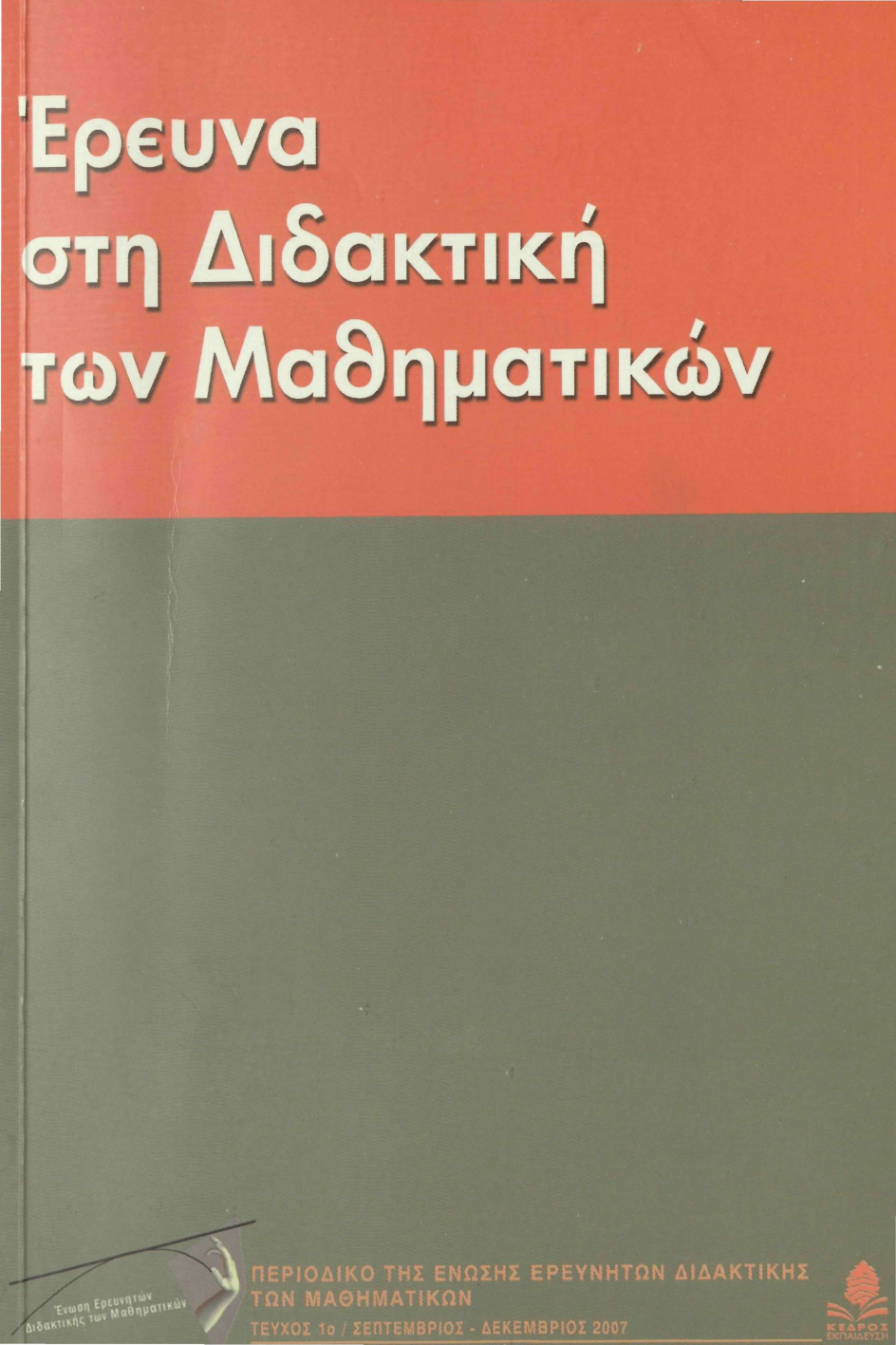FROM REALISTIC CONTENTS TO MATHEMATICAL MODELS. THE CASE OF LINEAR FUNCTIONS IN GRADE 10

Abstract
This study investigates students' ideas relating to transforming word problems in a mathematical 'language', which includes both, graphical and algebraic representations. The research question which we attempt to answer is whether students can move from verbal representation of a problem to typical mathematical 'language' such as the algebraic and graphical representations. In addition, we examine whether students prefer a certain type of representation, where they feel most competent.
The research was a case study and was carried out with the participation of 25 students in Grade 10 (first grade in 'Lykeion'). The subjects participated in a personal interview during which they were asked to solve linear word problems. The research data were analyzed using quantitative and qualitative methods.
It was found that the students in this study were generally able to transform word problems to algebraic and graphical representations. The findings, however, have shown some systematic faults in students thinking, such as the discontinuity in the graphical representations, the perception that the rate of change of a function means a negative slope in the graphical representation or another line from the beginning of the axes. In addition, in many cases, students were unable interpret graphical representations. Furthermore, students' work indicated that they were more familiar and preferred algebraic representations rather than using graphs.
Many researches point out to students’ ability to move from one type of representation to another, a competence that can emerge via students involvement with different representations of a problem. Consequently, students should be lead to work in environments of multiple representations, that is, environments that allow the representation of a problem and its solution in several ways: verbal, graphical and algebraic representation.
Article Details
- How to Cite
-
Μικρώνη (Eirini Mikroni) Ε., Ζαχάρος (Kostas Zacharos) Κ., & Κόμης (Vasilis Komis) Β. (2018). FROM REALISTIC CONTENTS TO MATHEMATICAL MODELS. THE CASE OF LINEAR FUNCTIONS IN GRADE 10. Research in Mathematics Education, (1), 40–62. https://doi.org/10.12681/enedim.18763
- Section
- Articles

This work is licensed under a Creative Commons Attribution 4.0 International License.
Authors who publish with this journal agree to the following terms:
Authors retain copyright and grant the journal right of first publication with the work simultaneously licensed under a Creative Commons Attribution licence that allows others to share the work with an acknowledgement of the work's authorship and initial publication in this journal.
Authors are able to enter into separate, additional contractual arrangements for the non-exclusive distribution of the journal's published version of the work (e.g. post it to an institutional repository or publish it in a book), with an acknowledgement of its initial publication in this journal.
Authors are permitted and encouraged to post their work online (preferably in institutional repositories or on their website) prior to and during the submission process, as it can lead to productive exchanges, as well as earlier and greater citation of published work (See The Effect of Open Access).



